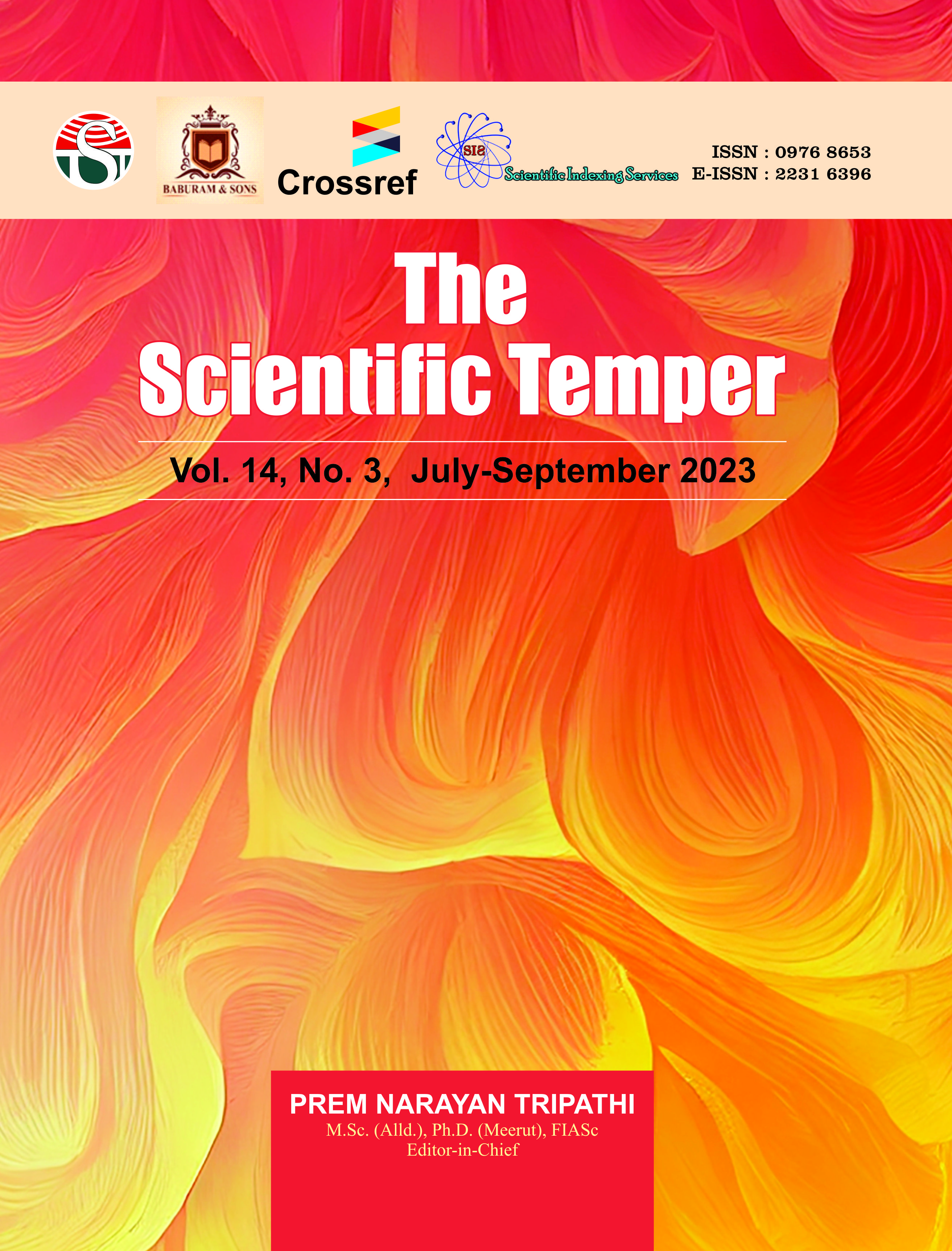Research on the current situation and influencing factors of college students learning engagement in a blended teaching environment
Downloads
Published
DOI:
https://doi.org/10.58414/SCIENTIFICTEMPER.2023.14.3.02Keywords:
Bended learning, Learning engagement, Teaching interaction theory.Dimensions Badge
Issue
Section
License
Copyright (c) 2023 The Scientific Temper

This work is licensed under a Creative Commons Attribution-NonCommercial-ShareAlike 4.0 International License.
Taking students from a university who participate in blended teaching of innovation and entrepreneurship as the research object, a model of the influencing factors of college students’ learning engagement in a blended teaching environment was constructed. This paper constructs a model of influencing factors of college students’ learning engagement in the blended teaching environment. The results showed that individual, teacher, and peer factors all have a certain degree of influence on learning engagement, but the degree of influence is significantly different. Teacher factors have the greatest impact, followed by individual factors, and peer factors have the smallest impact; Environmental factors have a moderating effect on the relationship between individual factors, teacher factors, peer factors, and learning engagement, but the direction of action is not consistent. The positive effect of individual factors, teacher factors, and peer factors on learning engagement increases with the increase of environmental factors, while the positive effect of teacher factors and peer factors on learning engagement weakens with the increase of environmental factorsAbstract
How to Cite
Downloads
Similar Articles
- Archana G, Vijayalakshmi V, Improving classification precision for medical decision systems through big data analytics application , The Scientific Temper: Vol. 15 No. 04 (2024): The Scientific Temper
- Rita Ganguly, Dharmpal Singh, Rajesh Bose, The next frontier of explainable artificial intelligence (XAI) in healthcare services: A study on PIMA diabetes dataset , The Scientific Temper: Vol. 16 No. 05 (2025): The Scientific Temper
- Roshni Kanth, R Guru, Anusuya M A, Madhu B K, A comprehensive study of AI in test case generation: Analysing industry trends and developing a predictive model , The Scientific Temper: Vol. 16 No. Spl-1 (2025): The Scientific Temper
- Lakshminarayani A, A Shaik Abdul Khadir, A blockchain-integrated smart healthcare framework utilizing dynamic hunting leadership algorithm with deep learning-based disease detection and classification model , The Scientific Temper: Vol. 15 No. 04 (2024): The Scientific Temper
- C. Premila Rosy, Clustering of cancer text documents in the medical field using machine learning heuristics , The Scientific Temper: Vol. 16 No. 05 (2025): The Scientific Temper
- Deepa Ramachandran VR VR, Kamalraj N, Hybrid deep segmentation architecture using dual attention U-Net and Mask-RCNN for accurate detection of pests, diseases, and weeds in crops , The Scientific Temper: Vol. 16 No. 07 (2025): The Scientific Temper
- Rajesh Kumar Singh, Abhishek Kumar Mishra, Ramapati Mishra, Hand Gesture Identification for Improving Accuracy Using Convolutional Neural Network(CNN) , The Scientific Temper: Vol. 13 No. 02 (2022): The Scientific Temper
- Isreal Zewide, Tamiru Boni, Wondwosen Wondimu, Kibinesh Adimasu, Yield and economics of bean (Phaseolus vulgaris L.) as affected by blended NPS fertilizer rates and inter row spacing at maenitgoldia, Southwest Ethiopia , The Scientific Temper: Vol. 14 No. 02 (2023): The Scientific Temper
- Jayalakshmi K., M. Prabakaran, The role of big data in transforming human resource analytics: A literature review , The Scientific Temper: Vol. 15 No. spl-1 (2024): The Scientific Temper
- M. Yamunadevi, P. Ponmuthuramalingam, A review and analysis of deep learning methods for stock market prediction with variety of indicators , The Scientific Temper: Vol. 16 No. 02 (2025): The Scientific Temper
<< < 4 5 6 7 8 9 10 11 12 13 > >>
You may also start an advanced similarity search for this article.



